Python学习之路——《python编程,从入门到实践》第二章习题
习题2-1
2-1 简单消息: 将一条消息存储到变量中,再将其打印出来。
message = "Hello python world!"
print(message)运行结果: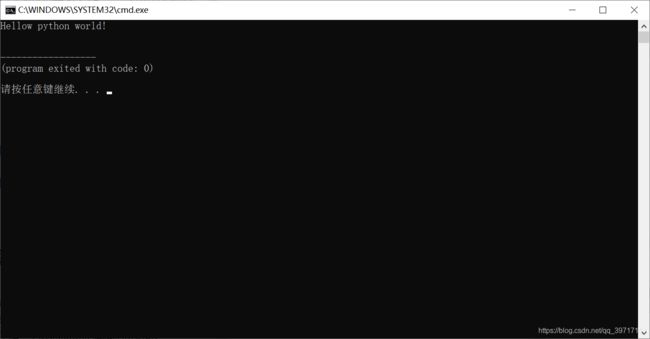
习题 2-2
多条简单消息: 将一条消息存储到变量中,将其打印出来;再将变量的值修改为一条新消息,并将其打印出来。
message = "Hello python world!" #赋值
print(message) #打印
message = "\nLet's learn about Python!"
print(message)运行结果:
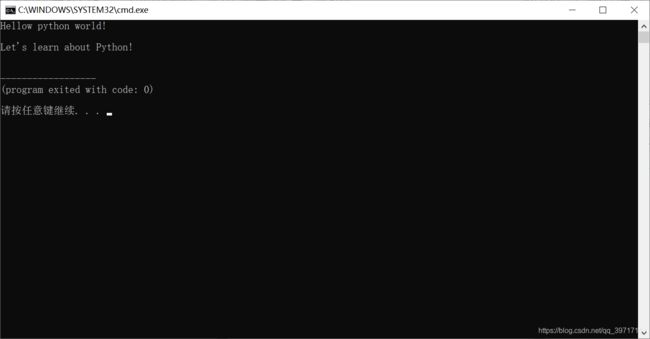
习题2-3
个性化消息: 将用户的姓名存到一个变量中,并向该用户显示一条消息。显示的消息应非常简单,如“Hello Eric, would you liketo learn some Python today?”
user_name = "Eric" #用户名赋值
print("Hello " + user_name +
", would you like to learn some Python today?")运行结果:
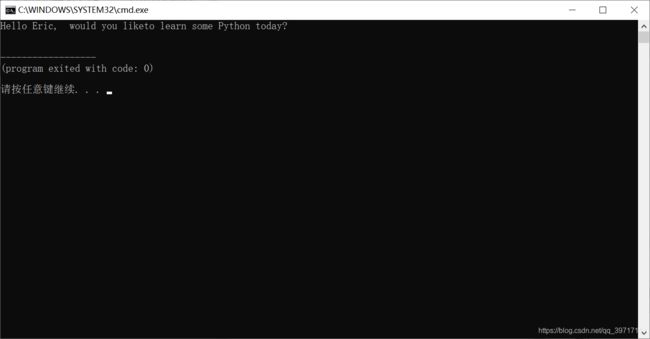
习题2-4
调整名字的大小写: 将一个人名存储到一个变量中,再以小写、大写和首字母大写的方式显示这个人名。
user_name = "eric"
print(user_name.lower()) #lower()方法显示人名小写
print(user_name.upper()) #upper()方法显示大写人名
print(user_name.title()) #title()方法使首字母大写
运行结果:
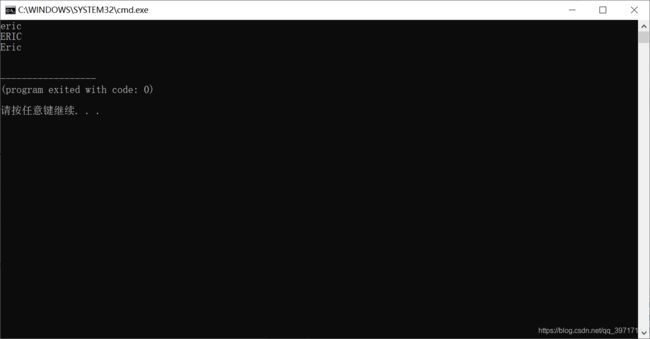
习题2-5
名言: 找一句你钦佩的名人说的名言,将这个名人的姓名和他的名言打印出来。输出应类似于下面这样(包括引号):
Albert Einstein oncesaid,“Apersonwho never madea mistake never tried anything new.”
print("Albert Einstein oncesaid," +
"\"Apersonwho never madea mistake never tried anything new.\"")运行结果:
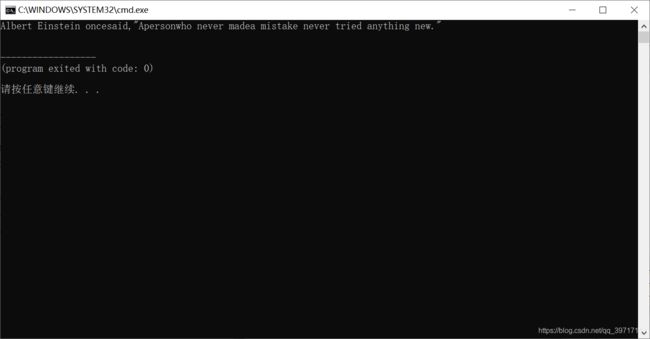
习题 2-6
名言2: 重复练习2-5,但将名人的姓名存储在变量famous_person 中,再创建要显示的消息,并将其存储在变量message 中。
famous_person = "Albert Einstein"
#注意字符串拼接如需换行需要加“\”
message = famous_person + " oncesaid, \
\"Apersonwho never madea mistake never tried anything new.\""
print(message)
习题2-7
剔除人名中的空白: 存储一个人名,并在其开头和末尾都包含一些空白字符。务必至少使用字符组合"\t" 和"\n" 各一次。
打印这个人名,以显示其开头和末尾的空白。然后,分别使用剔除函数。
person_name = "\t上官\n婉儿"
print(person_name)
print(person_name.lstrip())
print(person_name.rstrip())
print(person_name.strip())运行结果:

习题2-8
数字8: 编写4个表达式,它们分别使用加法、减法、乘法和除法运算,但结果都是数字8
print(5+3) #加法
print(10-2) #减法
print(2*4) #乘法
print(16//2)
#整除,python3中"16/2"返回的是浮点数,显示结果是8.0而不是8
print(2**3) #幂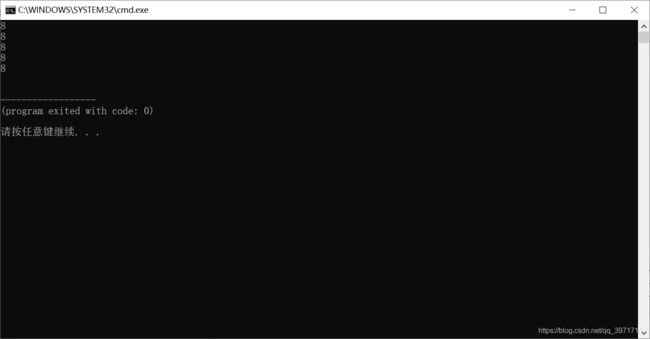
习题 2-9
最喜欢的数字: 将你最喜欢的数字存储在一个变量中,再使用这个变量创建一条消息,指出你最喜欢的数字,然后将这条消息打印出来。
favorite_num = 666
print("My favorite number is " + str(favorite_num))
#注意类型转换
The Zen of Python, by Tim Peters
Beautiful is better than ugly.
Explicit is better than implicit.
Simple is better than complex.
Complex is better than complicated.
Flat is better than nested.
Sparse is better than dense.
Readability counts.
Special cases aren’t special enough to break the rules.
Although practicality beats purity.
Errors should never pass silently.
Unless explicitly silenced.
In the face of ambiguity, refuse the temptation to guess.
There should be one-- and preferably only one --obvious way to do it.
Although that way may not be obvious at first unless you’re Dutch.
Now is better than never.
Although never is often better than right now.
If the implementation is hard to explain, it’s a bad idea.
If the implementation is easy to explain, it may be a good idea.
Namespaces are one honking great idea – let’s do more of those!
翻译和解释Python之禅:
优美胜于丑陋(Python 以编写优美的代码为目标)
明了胜于晦涩(优美的代码应当是明了的,命名规范,风格相似)
简洁胜于复杂(优美的代码应当是简洁的,不要有复杂的内部实现)
复杂胜于凌乱(如果复杂不可避免,那代码间也不能有难懂的关系,要保持接口简洁)
扁平胜于嵌套(优美的代码应当是扁平的,不能有太多的嵌套)
间隔胜于紧凑(优美的代码有适当的间隔,不要奢望一行代码解决问题)
可读性很重要(优美的代码是可读的)
即便假借特例的实用性之名,也不可违背这些规则(这些规则至高无上)
不要包容所有错误,除非你确定需要这样做(精准地捕获异常,不写 except:pass 风格的代码)
当存在多种可能,不要尝试去猜测而是尽量找一种,最好是唯一一种明显的解决方案(如果不确定,就用穷举法)
虽然这并不容易,因为你不是 Python 之父(这里的 Dutch 是指 Guido )
做也许好过不做,但不假思索就动手还不如不做(动手之前要细思量)
如果你无法向人描述你的方案,那肯定不是一个好方案;反之亦然(方案测评标准)
命名空间是一种绝妙的理念,我们应当多加利用(倡导与号召)
Python之禅
